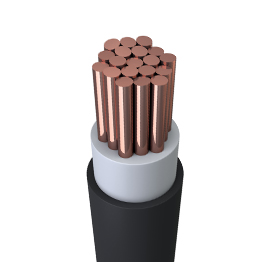
The National Electrical Code® (NEC®), specifically NEC Article 690, outlines specific provisions for photovoltaic (PV) systems, allowing for alternative wiring methods. These standards ensure that installations on both residential and commercial properties adhere to safety protocols, particularly after the PV system’s combiner box, when integrating with the building’s power system. Ground-mounted systems also generally follow these chapters, though some cases require listed PV Wire as stipulated by Article 690.
The Role of PV Wire in Solar Installations
PV Wire, recognized under UL 4703 for its safety standards, is critical in solar installations, designed to operate optimally within systems of 2000 volts or less. While other Chapter 3 wiring methods might be acceptable, PV Wire is often the preferred choice by manufacturers for its reliability and compliance with safety regulations. This wire type is especially crucial for running DC photovoltaic source or output circuits inside buildings, where it must be enclosed in metal raceways or metal-clad cable from the building’s entry point to the disconnecting means.
Regulations and Requirements for PV Wire
PV Wire’s sizing in conduit installations must be based on its conductor diameter as provided by the manufacturer. Available in 600, 1000, and 2000 volt options, PV Wire features insulation thicknesses that vary depending on the voltage level, with higher voltage options offering greater thickness. Notably, thermoset insulated PV Wire can be used for direct burial and must pass rigorous flame tests to ensure safety.
Marking and Installation Guidelines
The NEC mandates clear labeling of all exposed raceways, cable trays, and wiring methods containing PV power source conductors with “Photovoltaic Power Source” to warn of their specific function and potential hazards. Additionally, the code specifies how PV source and output conductors should be supported and secured within cable trays, particularly in outdoor settings.
Conclusion
As the adoption of solar technology grows, adhering to the NEC’s evolving standards is crucial for safe and effective PV system installations. Understanding and implementing the correct use of PV Wire and following specific installation guidelines help ensure that solar systems are both efficient and compliant with national safety standards. By staying informed about these regulations, installers can contribute to the broader integration of safe solar energy solutions across various environments.

